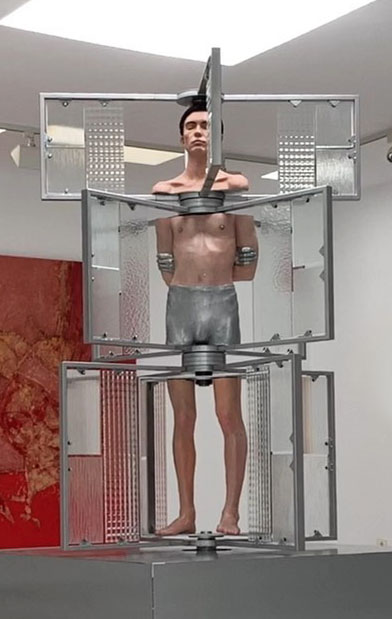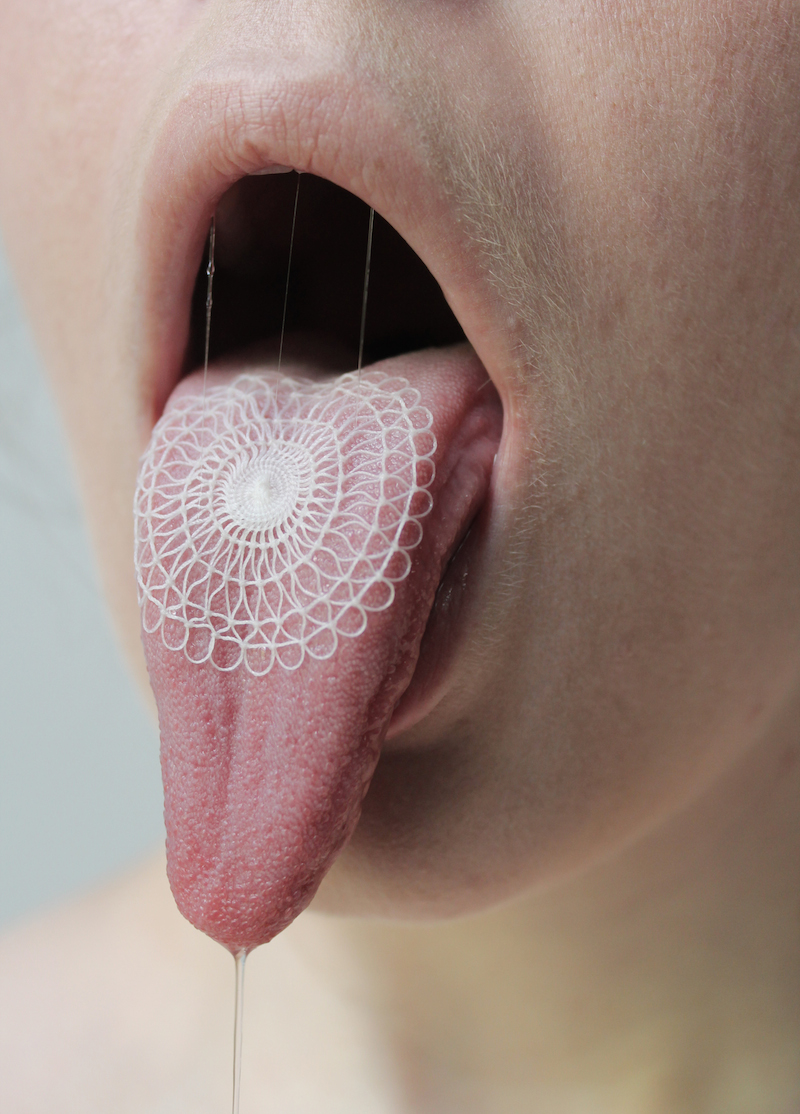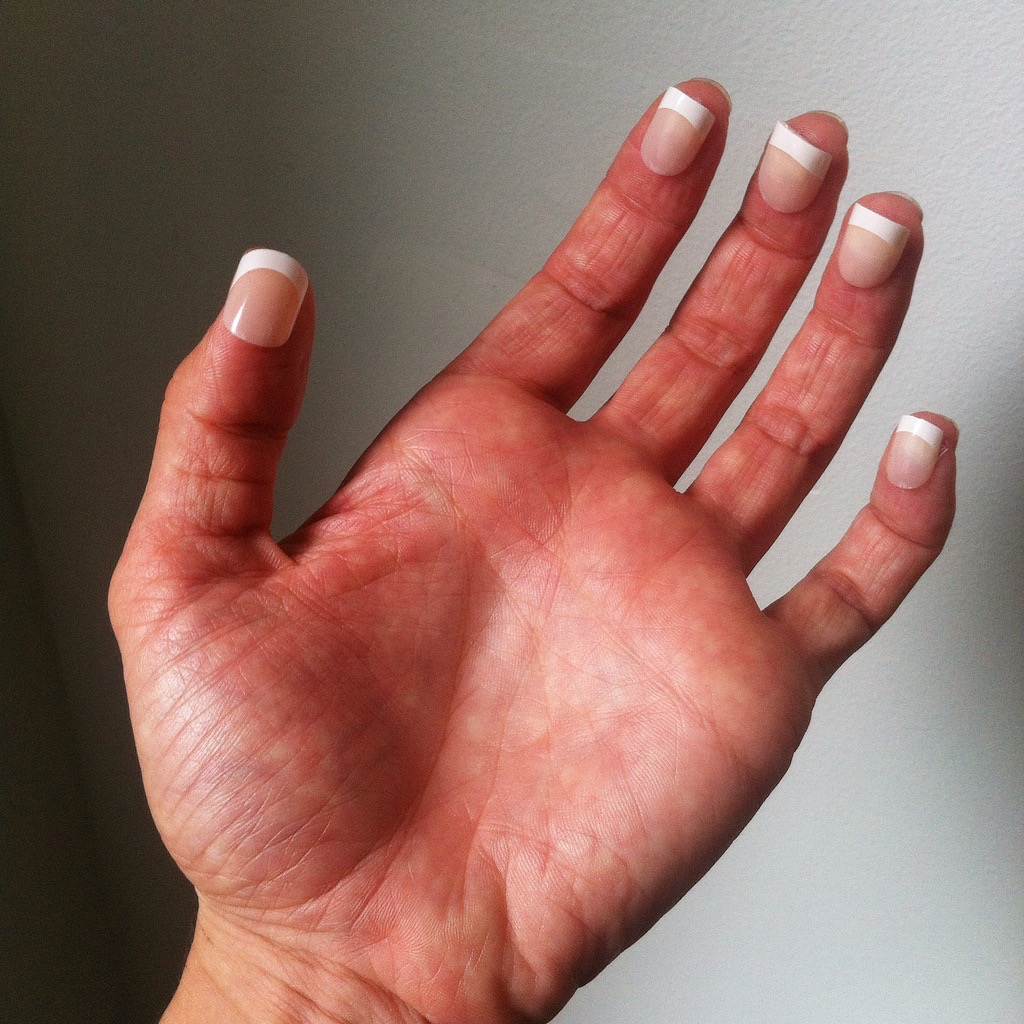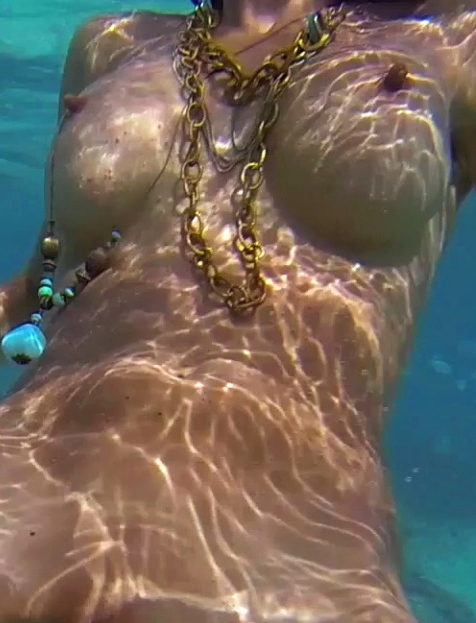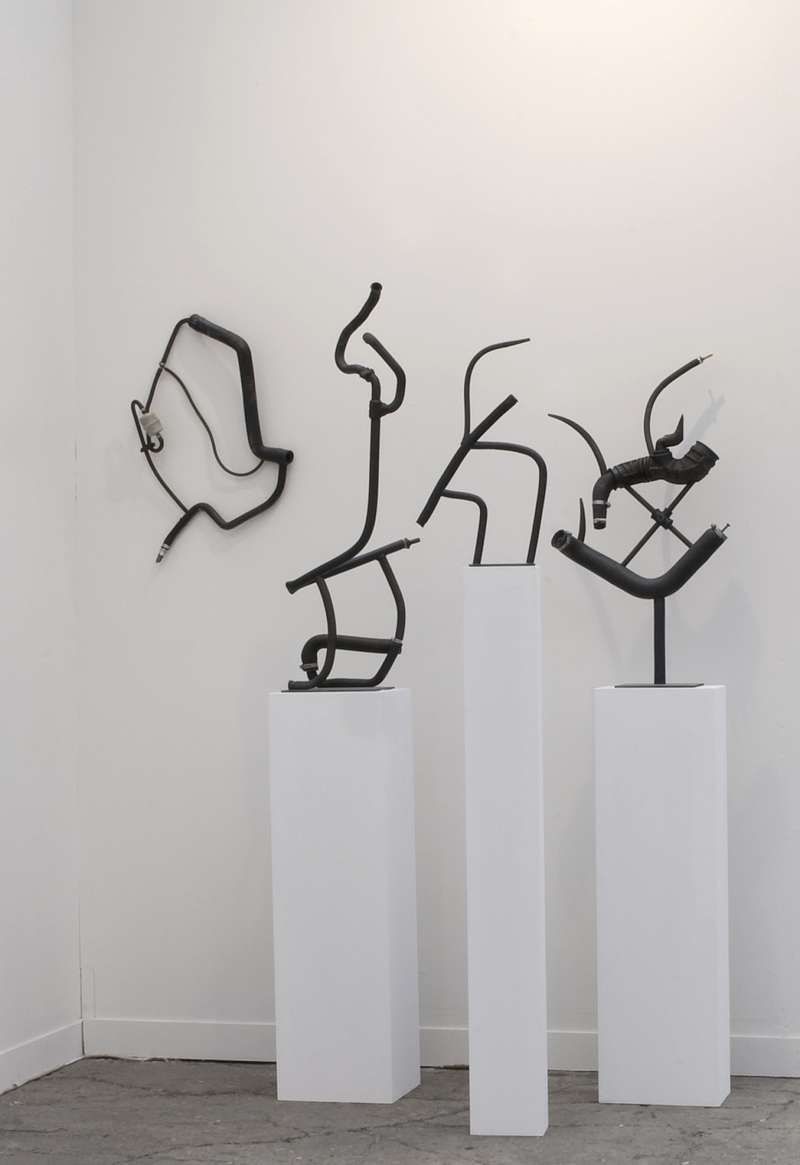Endangered Species
Best-known for her videos and animated films combining drawn art, music and occasionally scratched or reworked cinematic images, Camille Henrot’s work blurs the traditionally hierarchical categories of art history. Her recent work, adapted into the diverse media of sculpture, drawing, photography and, as always, film, considers the fascination with the “other” and “elsewhere” in terms of both geography and sexuality. This fascination is reflected in popular modern myths that have inspired her, such as King Kong and Frankenstein. The artist’s impure, hybrid objects cast doubt upon the linear and partitioned transcription of Western history and highlight its borrowings and grey areas. In the series of sculptures Endangered Species, for example, the artist has created objects inspired by African art by using pieces from car engines; placed on tall pedestals, these slender silhouettes with zoomorphic allure make reference to the migration of symbols and forms as well as to the economic circulation of objects. This survival of the past, full of misunderstandings, shifts and projections (as shown in the slideshow Egyptomania, the film Cynopolis, drawings of the Sphinx, and even in the photographs of prehistoric flints) troubles cultural codes and conventions. In this way, Camille Henrot’s work questions mental resistances and the past’s resonance, whether it be drawn from myth or from reality.



